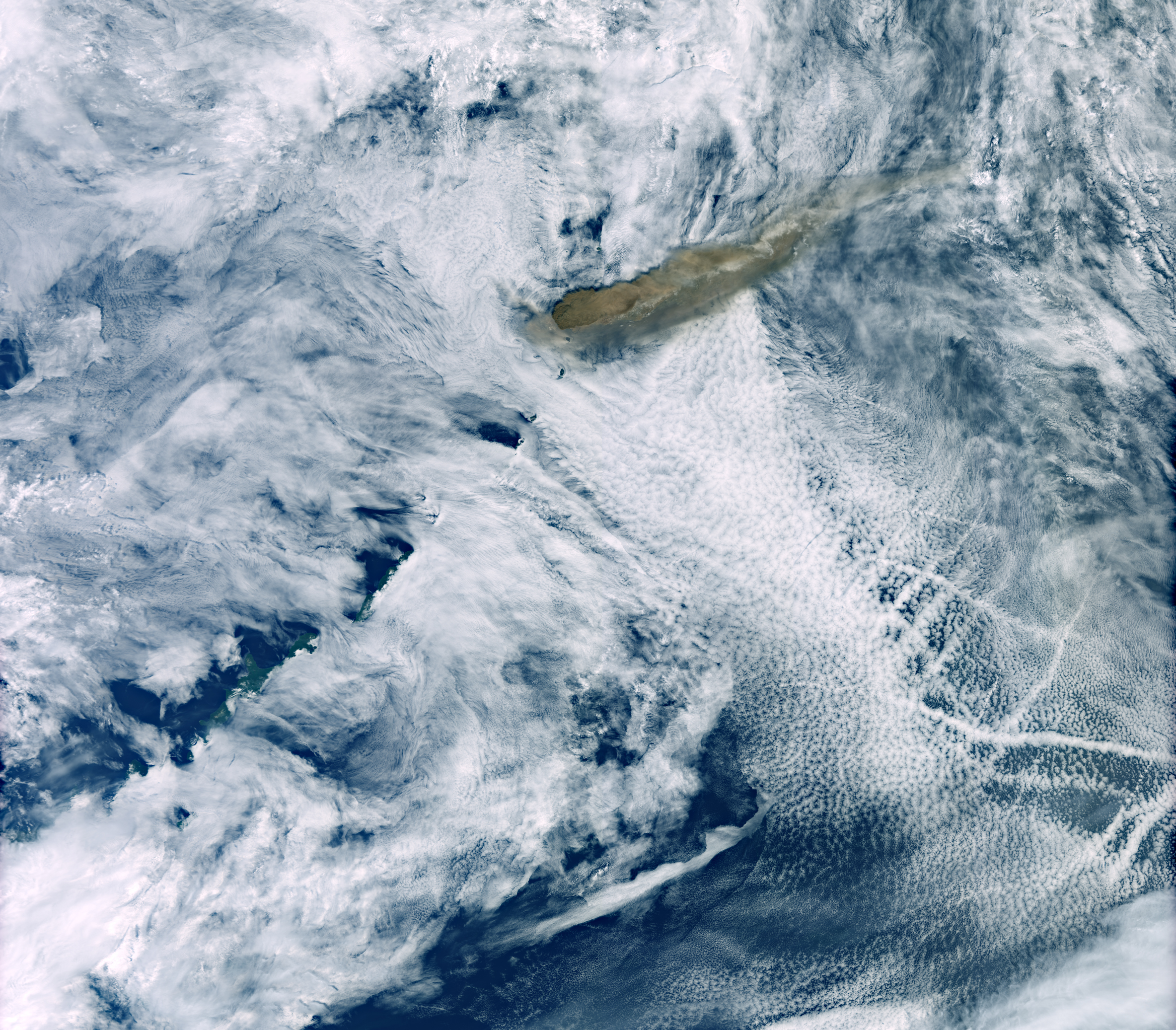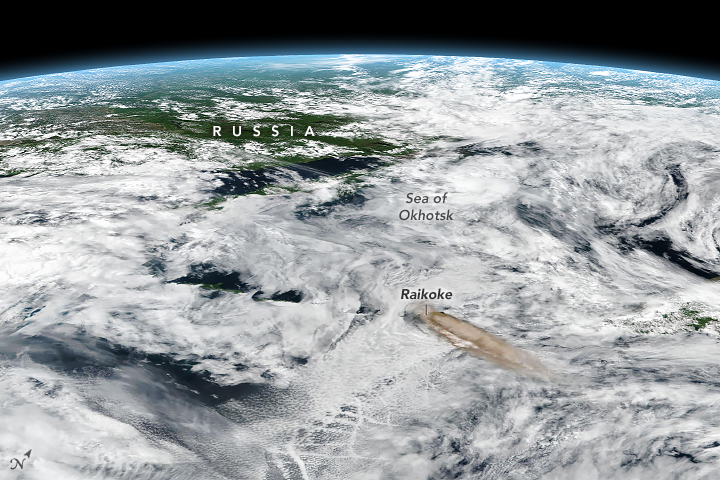Raikoke Volcano's Eruption Seen from Space (Photos)
Satellites captured images of an unexpected volcanic eruption.
New photos of Earth from space reveal a brown ash plume billowing from the Raikoke volcano in the North Pacific Ocean following an eruption on Saturday (June 22).
One of the images was shot by an Expedition 59 astronaut at the International Space Station on the morning of the eruption. The largely dormant volcano erupted for the first time in nearly 100 years at 4 a.m. local time (6 p.m. GMT on June 21), sending a cloud of thick volcanic plumes 8 to 10 miles (13 to 17 kilometers) above sea level, according to the European Space Agency, whose Copernicus Sentinel satellite imaged the eruption from orbit.
The image also shows a ring of clouds at the base, which seems to have formed from water vapor, NASA officials said in a statement. NASA's Terra and Suomi NPP satellites also saw the plume in space.
Related: In Photos: Guatemala's Fuego Volcano Eruption as Seen from Space



"What a spectacular image," Simon Carn, a volcanologist at Michigan Tech, said in NASA's statement. "The ring of white puffy clouds at the base of the column might be a sign of ambient air being drawn into the column and the condensation of water vapor. Or it could be a rising plume from interaction between magma and seawater because Raikoke is a small island and flows likely entered the water."
Raikoke is part of Russia's Kuril Islands, and has erupted twice before — in 1778 and 1924.
Its recent eruption came as a surprise, and satellites have been tracking the ash that rose from the volcano, since it can pose a hazard to aircraft, according to NASA's statement.
Breaking space news, the latest updates on rocket launches, skywatching events and more!
The satellites have also been tracking the movements of volcanic gases — Raikoke produced a concentrated plume of sulfur dioxide, which traveled east as it was swept toward a storm in the North Pacific, the statement added.
Carn indicated that the toxic gas may have reached the stratosphere, Earth's second layer of the atmosphere. "The persistence of large SO2 amounts over the last two days also indicates stratospheric injection," he said in the statement.
- How NASA Tech Is Helping Hawaii's Kilauea Volcano Response
- Hawaii Volcano's New Outburst Captured in Satellite Views
- Deadly Fuego Volcano Eruption in Guatemala Spotted from Space
Follow Passant Rabie on Twitter @passantrabie. Follow us on Twitter @Spacedotcom and on Facebook.

Passant Rabie is an award-winning journalist from Cairo, Egypt. Rabie moved to New York to pursue a master's degree in science journalism at New York University. She developed a strong passion for all things space, and guiding readers through the mysteries of the local universe. Rabie covers ongoing missions to distant planets and beyond, and breaks down recent discoveries in the world of astrophysics and the latest in ongoing space news. Prior to moving to New York, she spent years writing for independent media outlets across the Middle East and aims to produce accurate coverage of science stories within a regional context.

